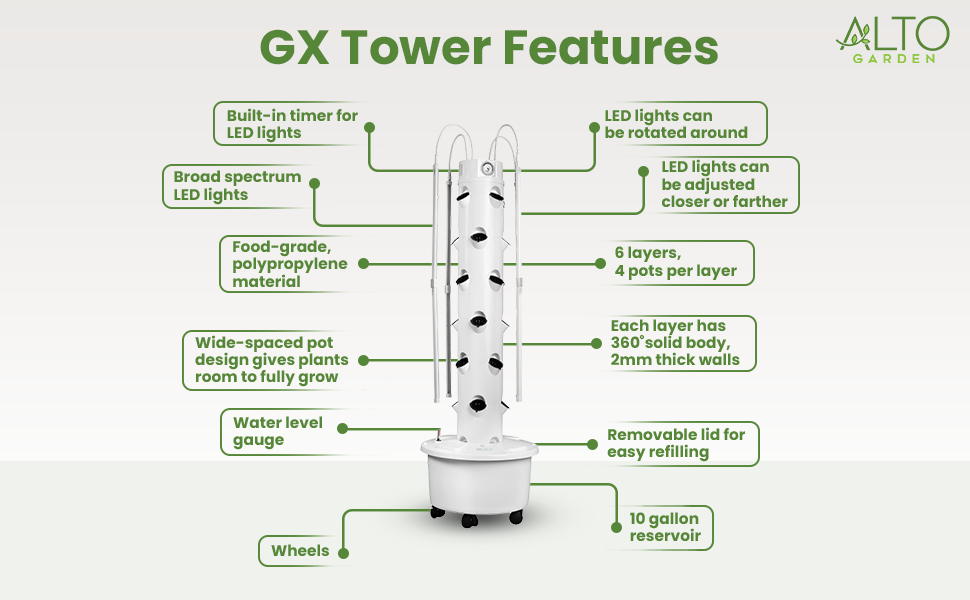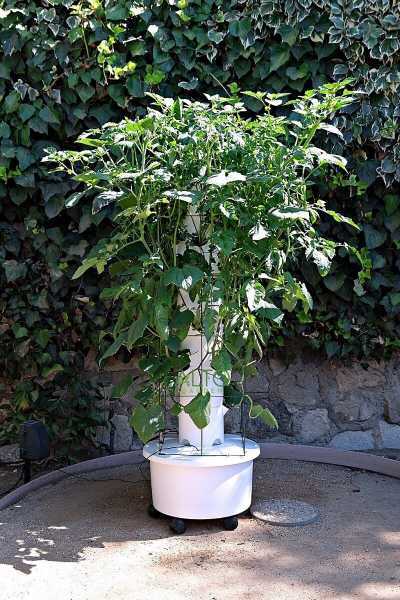As urban living spaces become more compact and the demand for fresh, organic food increases, hydroponic tower gardens have emerged as an innovative solution. ALTO Garden offers an efficient and space-saving way to grow your own vegetables, herbs, and fruits right at home. This article explores the benefits of hydroponic gardens, how they work, and why they are a game-changer for home gardening enthusiasts.
What is a Hydroponic Tower Garden?
A hydroponic tower garden is a vertical gardening system that uses a soilless growing method called hydroponics. Instead of traditional soil, plants are grown using nutrient-rich water, making the entire system highly efficient and low-maintenance. The garden consists of a tall, cylindrical tower with a reservoir at the bottom, which continuously recirculates water to nourish the plants.
How Hydroponic Gardens Work
Unlike traditional gardening, where plants are rooted in soil, hydroponic gardens utilize a nutrient solution that provides all the essential elements directly to the plant roots. The process follows these basic steps:
- Water Circulation: A pump at the base of the tower sends water to the top, allowing it to trickle down through the roots.
- Nutrient Absorption: The roots absorb nutrients directly from the water, promoting faster growth and higher yields.
- Aeration: Since the roots are exposed to more oxygen than in soil-based gardening, they absorb nutrients more efficiently.
- Automated Watering: The automated system ensures that plants receive just the right amount of water at regular intervals.

Benefits of Using a Hydroponic Tower Garden
1. Maximizes Limited Space
One of the most significant advantages of a hydroponic tower garden is its vertical design, which allows you to grow multiple plants in a small area. Unlike traditional gardening, which requires vast amounts of land, these towers only take up about three square feet of space.
2. Water-Efficient Gardening
Hydroponic gardens use up to 95% less water than traditional farming. Since water is continuously recycled within the system, there is minimal waste, making it an eco-friendly option, especially in regions with water scarcity.
3. Faster Growth and Higher Yields
Plants in a hydroponic system tend to grow 30-50% faster than their soil-grown counterparts. This is due to the optimized nutrient delivery and oxygen exposure, which accelerates plant development.
4. Pesticide-Free and Organic
Because hydroponic gardens are controlled environments, there is less need for chemical pesticides or herbicides. This means that your home-grown produce is fresher, healthier, and completely free from harmful chemicals.
5. Low Maintenance and Automation
With built-in automation for watering and lighting, hydroponic tower gardens require minimal effort. Whether you are a beginner or a seasoned gardener, the system’s automated functions take the guesswork out of plant care.
Setting Up Your Hydroponic Garden
Step 1: Choose the Right Location
Hydroponic tower gardens can be set up indoors or outdoors. If placing it inside, ensure there is adequate lighting, either from natural sunlight or LED grow lights.
Step 2: Assemble the Tower
Most hydroponic tower gardens come in an easy-to-assemble kit. Follow the manufacturer’s instructions to set up the base, reservoir, and tower structure.
Step 3: Add Water and Nutrients
Fill the reservoir with clean water and mix in the necessary hydroponic nutrients. These nutrients are essential for plant growth and should be replenished regularly.
Step 4: Plant Your Seeds or Seedlings
Insert your chosen plants into the tower’s designated slots. Popular choices include lettuce, basil, strawberries, and cherry tomatoes.
Step 5: Monitor and Maintain
- Check the pH levels of the water periodically.
- Ensure the pump is functioning correctly.
- Adjust the watering cycle based on plant needs and environmental conditions.

Hydroponics vs. Aeroponics: Understanding the Difference
Hydroponic tower gardens fall under a subcategory of hydroponics known as aeroponics. While hydroponics involves plant roots being submerged in water, aeroponics exposes the roots to air, misting them with a nutrient solution at timed intervals. This increased oxygen exposure promotes even faster growth and higher efficiency.
Hydroponic Grow Lights: A Crucial Component
If you plan to grow plants indoors, investing in high-quality LED grow lights is essential. These lights mimic natural sunlight, ensuring your plants receive the optimal spectrum for photosynthesis. Consider the following factors when selecting grow lights:
- Light Coverage: Ensure all plants receive equal exposure.
- Adjustability: Rotatable lights help in directing light efficiently.
- Spectrum Range: A full-spectrum LED light is ideal for supporting various growth stages.
Sustainability and Environmental Impact
Water Conservation
Traditional farming methods waste large amounts of water due to runoff and evaporation. Hydroponic garden, however, recycles water within a closed-loop system, significantly reducing water consumption.
Urban Farming and Food Security
With increasing urbanization, hydroponic gardening offers a viable solution for growing fresh produce in limited spaces. These systems empower individuals and communities to cultivate their own food, reducing dependence on store-bought vegetables.
Reduction in Carbon Footprint
By growing food at home, hydroponic gardening eliminates the need for transportation and packaging associated with commercial farming, leading to a lower environmental footprint.
Conclusion
Hydroponic tower gardens, such as those offered by ALTO Garden, present an innovative and sustainable approach to home gardening. With their space-saving design, water efficiency, and automated features, they make growing fresh, organic produce accessible to everyone, regardless of space limitations. Whether you are a beginner or an experienced gardener, incorporating a hydroponic garden into your home can be a rewarding and eco-friendly endeavor.


